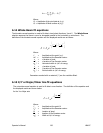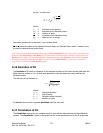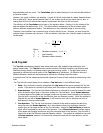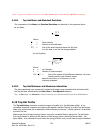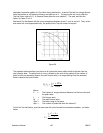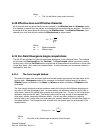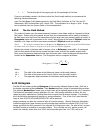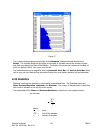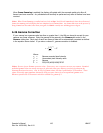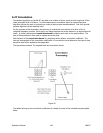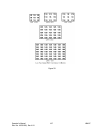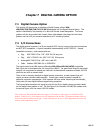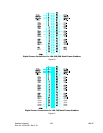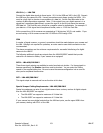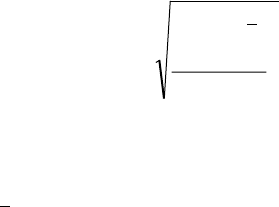
for the Standard Deviation,
()
σ
=
−
−
=
∑
Ss
n
n
n
1
2
1
Where:
σ
= std. deviation.
n
= number of samples.
Σ(S -
s
)²
= sum of the square of the differences between
the mean and each sample.
The Maximum and Minimum are just the largest and smallest values encountered in the samples.
6.24 Frame Averaging
The signal to noise ratio of the digitized data can be improved by using Frame Averaging. The
amount of the improvement is roughly the square root of the number of frames being averaged. The
LBA-PC can average a maximum of 256 frames for at best a 16 times improvement of the signal to
noise ratio. The amount of improvement is also limited by the noise content of your camera and our
digitizer system. In general you will begin to receive diminishing returns when you average more
frames than the square of the number of noise counts. For CCD cameras the noise is about 4-5 counts,
so averaging more than 16 to 25 frames will be of little benefit.
Pulse to pulse variations for a pulsed laser will be reduced by a like amount.
When Frame Averaging is enabled, the display will update with the averaged results only after all
frames have been received. Any calculations will similarly be performed only after all frames have been
received.
Notice: When Frame Averaging is enabled and you click on Stop!, the LBA will immediately abort the collection of
frames for averaging and will display the last completed set of averaged data. Any frames that were in the process
of being averaged are discarded, thus when you again click Start! a totally new averaging process is begun.
Notice: Do Not use Frame Averaging if your beam suffers from poor pointing stability, and you want to make
accurate beam width measurements. Instead, enable statistics and find the mean beam width by using results
averaging. This is independent of centroid position.
6.25 Frame Summing
You can use Frame Summing to observe the cumulative effect of a pulsed laser. The LBA-PC can
sum a maximum of 256 frames. Be careful that your pulse rate is not greater than the LBA and Camera
system can keep up with, and that the total energy doesn’t exceed the available dynamic range. Note:
You may want to use block mode to insure that you do not miss any pulses.
Frame summing will cause fixed pattern noise to increase in proportion to the number of frames
summed, while temporal noise will increase only as the square root of the number of frames being
summed. Thus some improvement in the signal to noise ratio will be realized. To further improve the
signal to noise ratio, try using Frame Summing together with Frame Averaging.
Operator’s Manual LBA-PC
144



